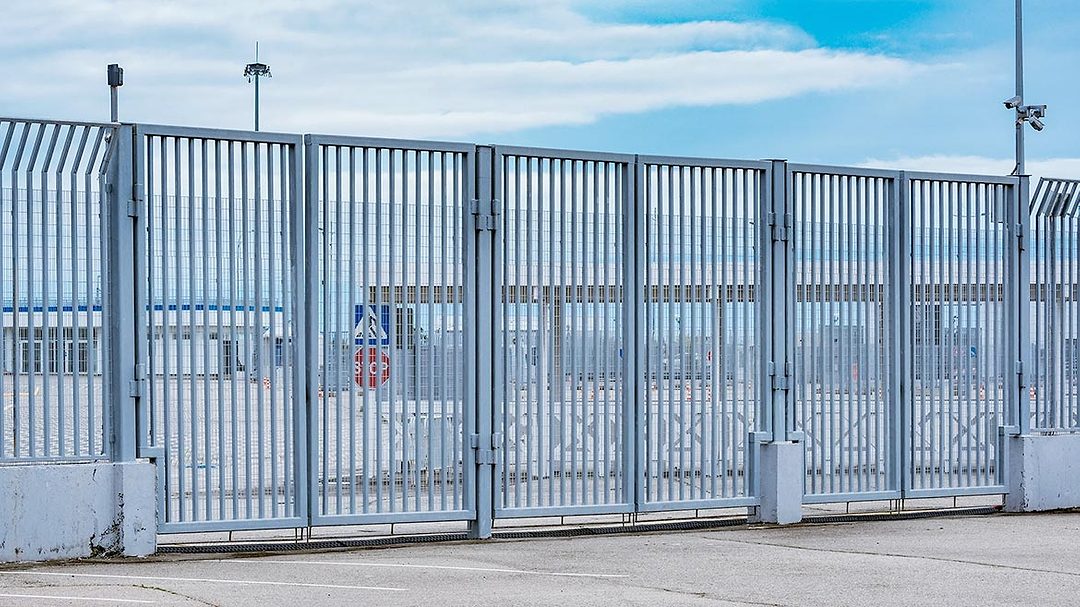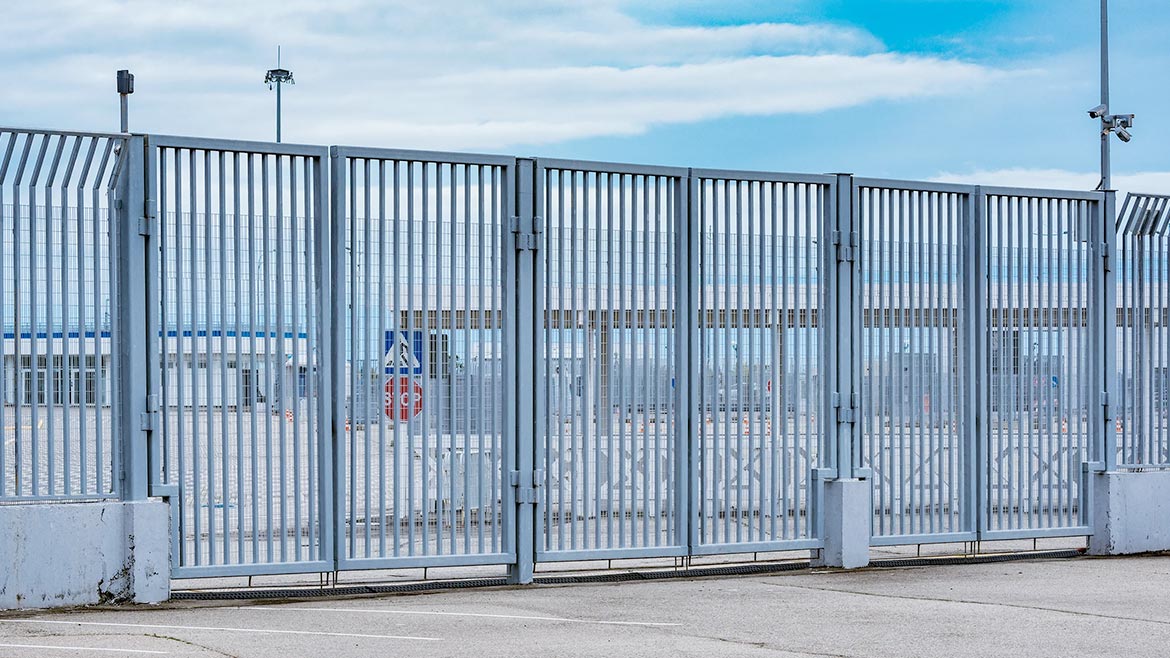Education & Training
Trends in perimeter security

Serjio74 / iStock / Getty Images Plus via Getty Images



Does anyone else remember the good ol’ days when all you needed to secure your perimeter was to clear the land around your boundary and construct a palisade with some earthworks to fortify the line? Perhaps deploy a flock of guard geese and post some pilum-porting sentries, and you were set to stand off a horde? Of course, the notion of establishing a perimeter to protect interior spaces goes further back than the Romans, and perimeter protection principles, also known as the Five D’s, remain the same: Deter, Detect, Deny, Delay and Defend. A sixth D — Demarcation — while often not identified, is important to asserting spatial ownership as part of Crime Prevention Through Environmental Design’s territoriality concept.
The modern perimeter spans many forms, from high-security, access-restricted locations, such as military bases, to high-end luxury retail locations with significant foot traffic passing by the front door. Applying the Five D’s in any of these applications has the same principle of protecting interior assets, but with vastly different options, controls and permissive uses available. Importantly, effective psychological demarcation is an increasingly important characteristic of establishing a perimeter when standard techniques, such as fences, aren’t available.
Threats against companies from modern aggressor technology, such as rogue aerial drones, present new challenges to vertically-expanding perimeters. Security leaders and risk management professionals are confronted with thwarting more sophisticated intrusion vectors, while building designers and operators often have user experience requirements and campus aesthetics that preclude some standard controls. However, the good news is that there are a variety of new tools to help design a more intelligent and protected perimeter.
Redefining the Perimeter
Some security planners use a simple technique — the classic defense-in-depth layer model — with the Five D’s applied in each layer. This model includes descriptions of permitted and prohibited uses that account for times and other events, such as storms and natural disasters. Defining use is key as this informs the site security plan, and the model should also now include airspace.
The key to designing a cost- and performance-effective solution is to understand how people and vehicles moving from one perimeter layer to the next impact potential threats. Often, campus planners do not want hard access control measures that conflict with the company’s brand along the perimeter, such as fencing and gates. Therefore, the actual “hard line” is often the building itself. Each opening in the building, including entrances, windows and utility portals, must be identified and secured by a robust design. Lately, trends also include improved access control systems and credentials, such as smart cards, optical turnstiles and intelligent video surveillance systems.
Rogue Drone Threats
The security perimeter now includes both physical and cybersecurity issues in an environment where security costs are always a concern. Planners need to design control measures for each boundary layer while factoring in threats to people’s privacy and the company’s wireless networks by rogue drones and other technologies. Rogue drones are becoming increasingly common, and planning a perimeter defense in collaboration with cybersecurity is an increasing necessity, especially where a business justification for the cost is expected. Identifying the location of every exterior cyber asset — both physical and digital — along with the route to them and the control measures needed to protect them reduces the likelihood of a cybersecurity breach. The axiom, “If I can touch it, I can own it,” applies physically and digitally. In some cases, tools such as anti-drone systems, jammers and even takeovers are possible under certain situations. Regardless of how likely the rogue drone risk may be, it’s a threat that needs to be factored into a perimeter security plan.
Perimeter Protection Technology
Many standard perimeter protection technologies have improved as new technologies have appeared. Perimeter-missioned security drones and robots are moving from the innovation phase into mainstream use while perimeter detection technology, including LiDAR and radar, artificial intelligence (AI) camera systems and fence intrusion detection systems, are technologically improving. Improvements are aimed to fine-tune accuracy and time performance while also allowing more autonomous and intelligent alarm assessment and response initiation. For example, fence accelerometers are reducing nuisance alarms on fence intrusion detection systems, and AI-enabled cameras have advanced behavior identification algorithms.
Similarly, GPS tracking and geofencing for virtual perimeter protection are gaining traction. Many of these control measures can be integrated into a unified system via APIs that seamlessly integrate detection and alerting functions, helping ensure greater efficiency and operator confidence while minimizing false and nuisance alarms.
For example, a distributor of luxury retail goods may have a warehouse and distribution facility, but they may be precluded from installing no-climb fencing topped with barbed wire with vehicle and pedestrian access control. By applying the Five D’s, the security executive may use a combination of warning signage along the perimeter (Demarcation and Deterrence) and full building and parking lighting (Detection and Deterrence). The lighting program could include automatic high-light illumination during a security event (Deter and Detect). The company might also employ an exterior drone for perimeter and area patrols (Detect), an AI video system programmed to identify a variety of unusual behaviors such as aggressive or unnatural movements (Detect), and a PA system to broadcast security messages when needed (Deter). The employees may have a security application installed on their phones to report concerns or ask for a virtual escort in real time (Defend). All these systems can be integrated into the company’s enterprise security platform for seamless management. The building itself may not appear unusual, but upgraded building materials with enhanced detection technologies offer a complete protection package for people and assets as well as protect the building perimeter.
What’s the result? An intelligent and semi-autonomous, multi-layer and capable security detection and response program that supports the enterprise’s employee safety culture, protects company assets and remains in alignment with the company’s brand objectives.
The basics and principles of perimeter security are really unchanged since ancient times, but our ability to automate and improve efficiency through better use of technology helps fulfill the campus operator’s vision while achieving the security planner’s goals. Whether it’s a corporate campus, high-value warehouse or solar electrical generation station, security technology and its thoughtful application achieve what we all want — better, more effective safety and security.
Looking for a reprint of this article?
From high-res PDFs to custom plaques, order your copy today!







